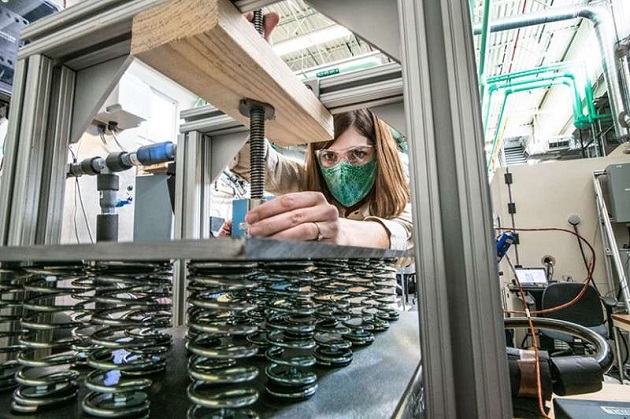Scientists from the National Renewable Energy Laboratory (NREL) have developed a simple way to better evaluate the potential of novel materials to store or release heat on demand in your home, office, or other building in a way that more efficiently manages the building’s energy use.
Their work, featured in Nature Energy, proposes a new design method that could make the process of heating and cooling buildings more manageable, less expensive, more efficient, and better prepared to flexibly manage power from renewable energy sources that do not always deliver energy when it is most needed.
Thermal energy storage allows buildings to function as a huge battery by storing thermal energy in novel materials until it can be used later. One example is a heat pump. While electricity is needed initially to create and store the heat, the heat is used later without using additional electricity.
A Ragone plot shows the tradeoff between how much energy a device can store and its discharge power, or how quickly the device can release energy. This foundational approach makes comparisons between different thermal storage materials or device improvements easier to evaluate. It serves as a starting point for defining targets and is a useful design tool to develop new thermal storage materials and devices that can serve as novel, alternative energy storage options. This framework ensures the cost-effective design of thermal storage materials and devices depending on the power and energy requirements of a particular application,” said Jason Woods, a senior research engineer at NREL and lead author of the newly published paper.
Thermal energy storage systems will need to become more flexible and adaptable with the addition of onsite power generation, electric vehicle charging, and the combination of thermal storage with batteries,” Woods said. “Part of this flexibility requires higher power—but this higher power comes at a cost of available energy, as this publication highlights.”
The way in which thermal energy storage is used will impact its performance. Scientists need to consider questions about how stored energy can best be used to keep building occupants comfortable, or for different applications like maintaining electronic equipment at a safe temperature.

